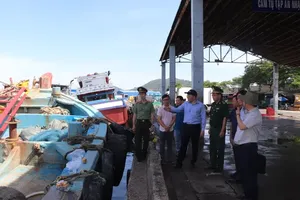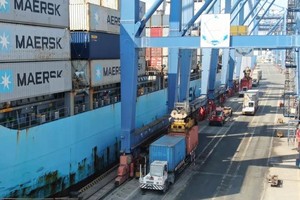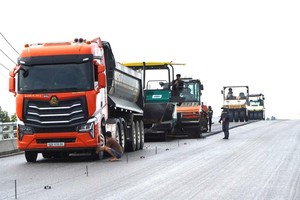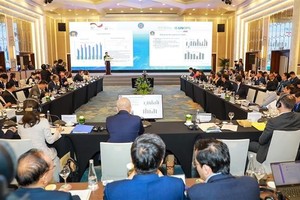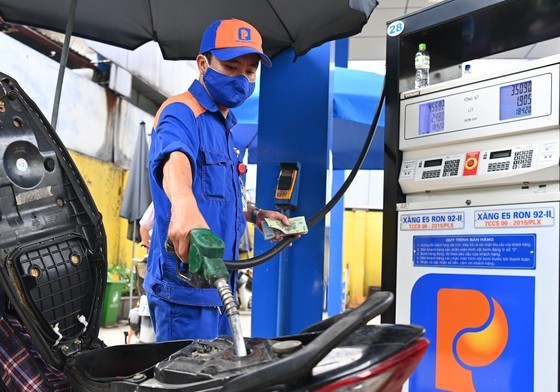
Risks for companies
It may sound incredible if we hear that a major oil company is running losses. However, this is in fact happening because petrol and oil is bought as per the price set on the contract but rarely bought right away because it is often too expensive. There is also no plan to cover for transportation and other overhead costs. This creates higher commission payouts and more and more shipping costs, which all add to very high pricing. According to international practice, enterprises buy petrol in terms of usually one month, three months, or six months. This results in pricing at current prices, but it is not until one month, three months, or six months that gasoline is actually supplied, which becomes risky for gasoline companies.
For instance, the global gasoline price was prohibitively high at the end of June. Petroleum enterprises cannot predict if the price will decrease so that they can buy at a low price, while if they want to buy at a low price, suppliers may not sell. Therefore, enterprises have to pay a high price, but after three months it is possible that the world price of gasoline will become even lower. Therefore, the concerned enterprise must buy at a high price and sell at a low price, which then leads to losses.
Another risk comes from the operating mechanism when the price of petrol across the world increases even higher than the price regulated by the State for domestic retail. For instance, on 29 August the wholesale price of diesel oil in Singapore was VND 2,000 per liter more expensive than the domestic price of diesel in Vietnam. This is to say that the concerned enterprises have to buy at a higher price and sell at a lower price. If the price drops too low, they will not sell and will hold on to the goods. Keeping goods for fear that the State will check if there is no gasoline for sale will cause the State to revoke their license. This situation has forced businesses to choose to keep goods and find ways to push this purchased gasoline to reserve gasoline.
Normally, the current discount rate is calculated at the transportation discount rate of VND 250 per liter to VND 300 per liter, and the business discount of VND 650 per liter to VND 700 per liter. Therefore, a normal discount of VND 900 per liter to VND 1,000 per liter is reasonable. But now the concerned enterprises are losing VND 2,000 per liter to VND 3,000 per liter and asking retail businesses to give a discount of zero dong. Retail enterprises buy at a discount of zero dong and still have to sell at the price set by the State.
Hence, petroleum retail enterprises also suffer losses even though they have tried to find ways to reduce transportation costs and business expenses. This is the reason why a paradox is created when the more you sell the more you lose. When leading petroleum enterprises have a lot of losses, they accept the option of not selling anymore, or selling with the condition that the retail businesses have to bear the shipping costs themselves. If this option is accepted, it means that petroleum retailers must bear this transportation cost and see zero discount.
Unsuitable mechanism
There arises a question that is of much concern to the public right now which is the temporary shortage of petrol. Over the last few years, the Ministry of Industry and Trade has tried to grasp the situation and repeatedly recommended and monitored regulations in the petroleum market. However, the Ministry of Industry and Trade has not yet foreseen fluctuations in petroleum trading activities in the Vietnamese market. The Ministry says that there is no shortage of gasoline. This is true if there is a balance between consumption and import. The Ministry needs to record and seek feedback from businesses as well as study the reality of the market from which to make appropriate adjustments.
There are cases where a number of petroleum wholesalers and retailers find that the selling price on the market is cheaper than the import price, so they hold the goods and do not sell, causing a temporary shortage. This is an inadequacy in pricing that needs rectifying. Recently, the Ministry of Industry and Trade withdrew the licenses of a number of petroleum wholesalers, while stipulating that retail enterprises can only buy from a single focal enterprise. The withdrawal of the licenses made the focal enterprises say they have no oil to sell, and the retail businesses all closed down. This is also the reason why there is no shortage in total supply but there is a local shortage in some regions and locations.
The Ministry of Industry and Trade needs to look at all the inadequacies in the current operating mechanism such as the pricing mechanism. First of all, the logistics costs need attention. Transportation costs from abroad and related costs such as loading, and unloading, were previously at US$1 per barrel when entering Vietnam. In the last six to seven months, when the Russia-Ukraine conflict broke out, the supply chain was broken, transportation and logistics costs increased globally, and the cost of transportation from Singapore to Vietnam increased to about US$2 per barrel to US$3 per barrel. Therefore, the costs for the key petroleum importers increased, while the State still charged US$1 per barrel, which meant that the focal enterprises had to bear the higher price.
The Ministry of Industry and Trade needs to balance supply with demand and stabilize petroleum import hubs, as it is time to have additional regulations for such issues. In the long term the aim must be to build and develop a petroleum market that operates in accordance with market economy.







